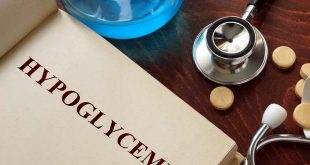There are different levels of low blood sugar – mild, moderate and severe – and they are managed differently. It is especially important to know about low blood sugar emergencies so that you or a family member, friend, caregiver or co-worker can help out in this situation.
What are normal blood sugar levels?
Diabetes Canada recommends the following blood sugar targets for most people with diabetes:
- Before meals: 4 to 7 mmol/L
- Two hours after the start of a meal: 5 to 8 mmol/L
Blood sugar targets should be individualized to the person living with diabetes, taking into consideration their diabetes medication, age, general health and living circumstances, along with their treatment goals.
What level indicates a low blood sugar?
For individuals taking insulin or medication that increases insulin produced by the pancreas, such as glyburide, gliclazide or repaglinide, low blood sugar (also called hypoglycemia) is defined as less than 4 mmol/L. This is considered a “warning level” or a call to action. Symptoms of hypoglycemia may begin to occur at this time. If blood sugar falls to less than 3.1 mmol/L, the body starts to produce hormones to protect against hypoglycemia, and the fight or flight response and symptoms increase.
How do you manage mild to moderate hypoglycemia?
Early symptoms, referred to as mild hypoglycemia, include trembling, hunger, sweating, heart pounding or racing, feeling anxious, nausea or tingling. As hypoglycemia worsens into moderate hypoglycemia, the symptoms are related to a shortage of sugar to the brain and include difficulty concentrating, confusion, weakness, drowsiness, vision changes, difficulty speaking, headache and dizziness.
The treatment for mild or moderate hypoglycemia is 15 grams of fast-acting carbohydrate. Examples include:
- 15 grams of glucose in the form of glucose tablets
- 1 tablespoon of honey
- 1 tablespoon of sugar dissolved in water
- 2/3 cup of fruit juice or regular pop
- 6 Life Savers™, 3 hard candies or 14 Skittles™
It is important to make sure that the choice of carbohydrate is fast-acting. A chocolate bar, for example, contains more than enough carbohydrate to raise blood sugar; however, it also contains a significant amount of fat, which slows the absorption rate of the sugar.
Once you have treated a low blood sugar, wait 15 minutes and retest your sugar. If it is less than 4 mmol/L, retreat with another 15 grams of glucose. If it is over 4 mmol/L, eat a snack that contains a carbohydrate and a protein if your next meal is still a few hours away. This is to keep you safe.
It is important that you always carry a form of fast-acting carbohydrate with you.
What is a low blood sugar emergency?
Severe hypoglycemia is any hypoglycemic event that a person cannot treat themselves. This usually happens when their blood glucose level is less than 2.8 mmol/L. This is known as a low blood glucose emergency. The person can be awake and talking but is unaware that they are having a low blood glucose and unable to treat themselves. They may be acting confused. They need someone to help them ingest a fast-acting carbohydrate. If the person is awake and can swallow, it is safe to give juice or glucose tablets.
To treat severe hypoglycemia, the amount of fasting-acting carbohydrate is 20 grams. Wait 15 minutes and if blood glucose is less than 4 mmol/L, retreat with 15 grams of carbohydrate. If it is over 4 mmol/L, have a snack or a meal. If the person loses consciousness during a low blood sugar emergency, do not use anything by mouth to treat their hypoglycemia. This could cause them to choke. Treatment of severe hypoglycemia in someone who is unconscious includes calling for medical assistance (911 or your local emergency service) and administering glucagon, if it is available.
Learn to prevent
The most important thing to know about low blood glucose is what causes it. This may include not eating enough food (specifically carbohydrate), unplanned or unusual activity, a medication error (too much insulin, for example) and alcohol intake. Understanding why hypoglycemia occurs can help you to prevent it. Planning for activity, ensuring adequate food intake, and consuming alcohol in moderation are just a few ways you can prevent hypoglycemia. Another important way is to use your blood glucose monitor to check if you are in the safe range before, during and after physical activity.
Prevention, detection and treatment of hypoglycemia should be part of your diabetes management plan, to help keep you safe.
This article is sponsored by Eli Lilly Canada Inc. but independently created by Diabetes Care Community Inc.
 Diabetes Care Community Learn, connect and care
Diabetes Care Community Learn, connect and care





